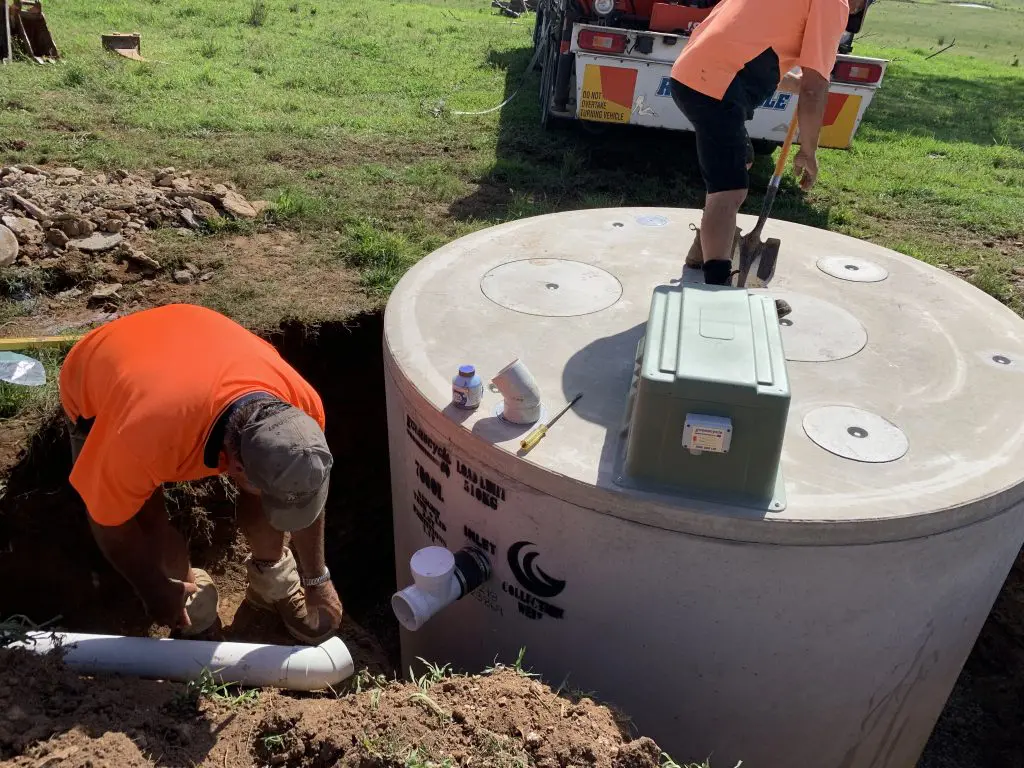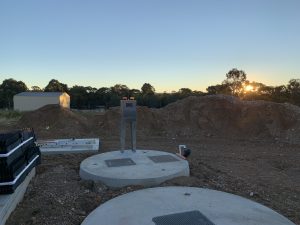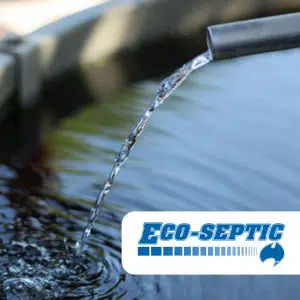Wastewater Treatment Systems
Wastewater Treatment Systems
The ECO-SEPTIC wastewater treatment purifies the liquid waste from homes, commercial, industrial, and agricultural locations. It is one of the environmental conservation processes that has the greatest significance and value, hence this type of system is important not only in australia but around the globe.
Homes and other commercial establishments like manufacturing plants, refineries and industrial plants have on site facilities that are designed to make sure that the wastewater has been processed for treatment; before it is released into the surrounding environment.
Wastewater management will always be an important environmental topic ; hence treating wastewater safely and in an eco-friendly way should be encouraged repeatedly whether it’s in your home or commercial premises. This will not only help save water, help to have a healthy and sustainable surrounding, where people can live, but also protect residents from contracting waterborne diseases.
Wastewater treatment is the process of converting water that is generated by households and businesses – and are no longer safe and suitable for use – into a usable form that can be released back to the environment. The liquid waste is the result of several human activities, including bathing, washing, using the toilet and rainwater runoff.
The liquid waste from households, commercial establishments, and other businesses are full of impurities, such as bacteria, chemicals, and other toxins. Once it is treated, the contaminants are reduced to an acceptable level, making the water safe for other uses like irrigation.


Wastewater treatment is done in a facility that is set up on the site of buildings or dwellings. It is called the wastewater treatment plant. Its purpose is to ensure that the liquid waste is safe enough to be disposed into the environment. The treatment process undergoes three stages, as follows:
Stage 1 – Preliminary Treatment
As the wastewater gets into the plant, large objects such as plastic items, rags, and rubbish pass through a specially designed filter screen, to enable these items to get separated from the liquid waste. These articles can cause blockages and cause damage to the system at times.
After screening, the wastewater flows through the grit removal tank. This is where rocks and other heavy inorganic materials sink to the bottom of the tank. When the water settles, the tank is drained and the liquid flows into the next level for treatment.
Stage 2 – Primary Treatment
What comes next is the settling tank or clarifier, also termed as sedimentation tank. Here, the particles in the water deposits to the bottom of the tank and forms a sludge. A component called mechanical scraper pushes the sludge to the end of the tank, where it is then directed to the sludge treatment area by pumping.
Stage 3 – Secondary Treatment
In this stage, the wastewater is almost getting clear. However, there are still bits of dissolved nutrients and organic matter that must be removed; hence it needs to undergo the aeration process. This process is the natural possible alternative to chemical processing.
Air is pumped into the tanks that hold the wastewater, to encourage the growth of naturally occurring microbes that need oxygen, to allow them to break down the organic materials.
The microbes flock and feed on the remaining organic matter in the wastewater. So, the contaminants get removed and the organic matter is converted into carbon dioxide, nitrogen gas and the more activated sludge.
After stage 3, the partially clear water flows through the sedimentation tank. This is the last and final step of the treatment and the water during this stage becomes clear and does not have any foul smell.
Some of the treated wastewater flows into the local water courses; some are further treated for recycling and used as follows:
– Irrigation of non-food crops like turf, trees, and flowers
– Irrigation of open public spaces, such as golf courses and sports grounds,
– Replenishment of groundwater supply; by pumping treated water underground.
Call one of our specialists for a quick quote
How does Wastewater Treatment benefit people and the Environment?
Wastewater treatment provides numerous benefits and the most important of them are the following:
* Wastewater treatment prevents pollution, due to which the environment is kept clean. Pollution is the cause of major illnesses. In some cases, pollution may lead to even serious health issues. When the liquid waste is treated and purified, it can be used for gardens and lawns and most irrigation systems.
* This process makes use of the most important natural resource – water – in the most original, clever, and inventive manner. After it has been treated, water can be used to cool the machines in factories and other industries, thus minimizing the use of freshwater.
* Wastewater treatment prevents the sudden spur of waterborne diseases; due to water contamination, caused by disease-causing microbes or pathogens.
These points above are reasons why wastewater treatment should be made a part of every household or business.

Maintenance of Waste Water Treatment Plants

Wastewater treatment plants need to be properly and regularly maintained. When it’s maintained properly, you can be sure that it will perform to its optimum capacity. It will treat and dispose of the effluent (treated water) safely from your home or business.
Some people have a wastewater treatment plant installed on their site and don’t regularly maintain the system. When problems crop up or the plant suddenly stops functioning people remember that they have an onsite water treatment plant.
Even the simplest of systems should be maintained regularly. Regular servicing and maintenance saves you money over a longer period of time, by avoiding repairs or replacements of a failing system.
For a more complex system like an AWTS or aerated wastewater treatment system, regular inspections and maintenance should be undertaken by a qualified and experienced service provider, as part of your service agreement.
For basic systems, such as a septic tank, perhaps you can do a simple visual check yourself to look for signs of any potential issues externally. When you notice or spot an issue, immediately contact the service provider of your system.
Remember, you should not attempt to make the repair of the wastewater treatment yourself, this is a job for qualified service personnel only.
Call one of our specialists for a quick quote
Related Posts
- The Economics of Septic Systems: Cost Savings and Long-Term Investments
- How Much Wastewater Does A Person Produce?
- Are Aerated Wastewater Treatment Systems Expensive To Operate
- How much wastewater does one person produce?
- How To Make Sure You Have The Right Septic Tank For Your Home
- What Are The Sources Of Wastewater?
- Revitalize Your AWTS for the New Year: A Comprehensive Guide to Yearly Servicing
- Our guide to looking for a greywater wastewater pump





